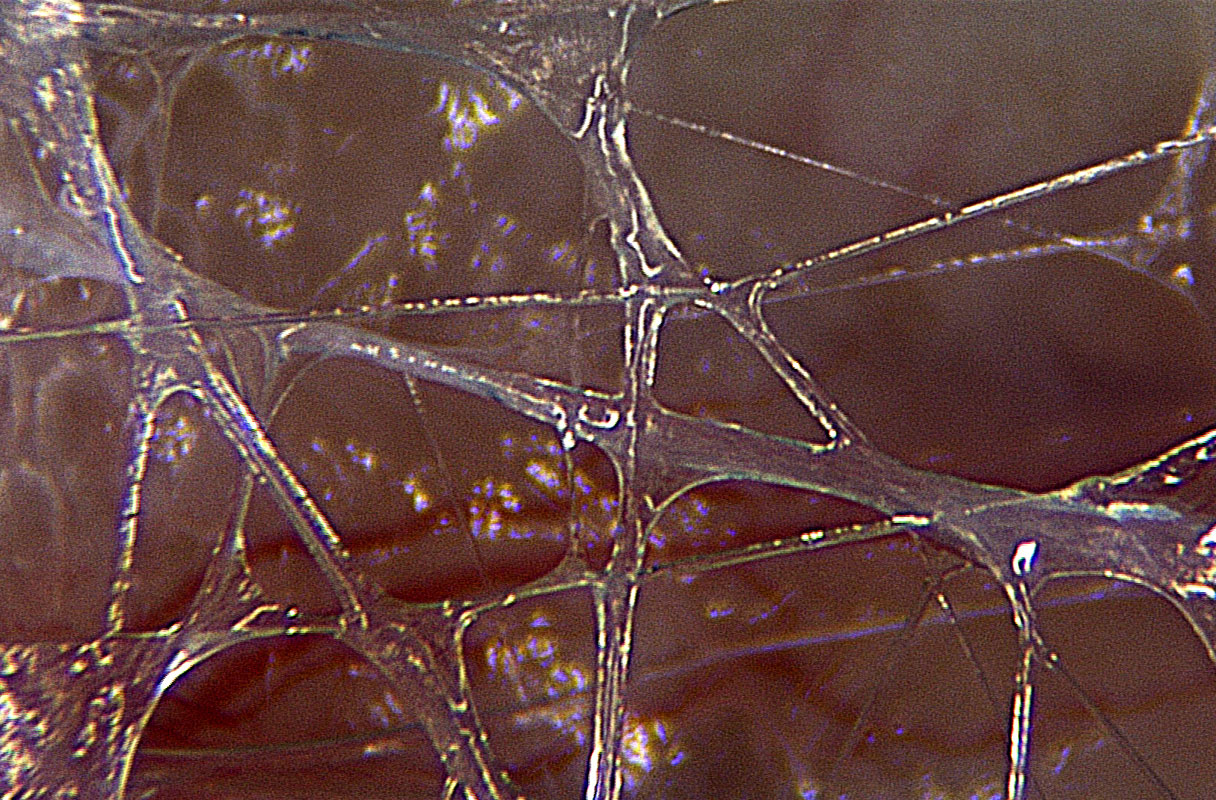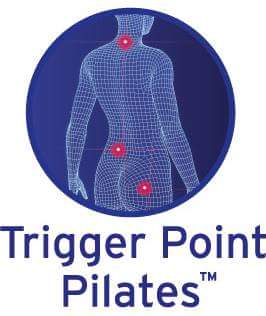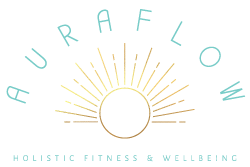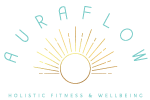What is Trigger Point Pilates and what is Fascia and how do the two come together? Well, firstly let me begin back to front and start with the fascia. Fascia is a connective tissue that runs throughout the entire body, it is basically the glue that keeps all our organs and muscles in place. For example, have you ever taken a leg off a chicken and have had to remove that slimy cobweb-like layer before you get to the meat? Well, that is fascia. And we have it binding us together so we don’t fall apart or collapse in a heap on the ground. It is essentially our organisational system, keeping everything in place. A three dimensional network matrix made up of fibres and fluids that entwines and protects, supports and organises every bone, muscle, organ and cell.
The primary materials in the fascia connective tissue are collagen and a gelatinous fluid substance. And by this matrix connecting everything from organ cells to skin, it allows our bodies to communicate with itself. It is the only tissue that is connected with all the other tissues in the body. So not only is it our organisational system, it is also our communication system. How clever is that?! It is only more recently that scientists have started to look into the importance of fascia in the body. Originally, for dissections it was discarded as waste – just thrown in the bin! Now, experts are starting to explore it’s role and function in our physiology, health and movement.

There are several types of fascia, but these are the main 3:
– Superficial – this lies just beneath the skin helping to give shape to the body and face, binding the skin to the Deeper layer of fascia. It also helps to regulate body temperature and provide fat and water stores for the skin.
– Deep – This surrounds your bones, muscles, tendons, nerves, arteries and veins, binding these to the Visceral fascia. It’s consistency is thicker and sticker than the superficial and is less extendable. Helps muscles in their action cope with force and pressure.
– Visceral – Surrounds your internal organs.
Fascia and Movement
As I mentioned above, fascia helps to give our bodies shape. So, it can all too easily pull us, not out of shape so much, but out of alignment. This can happen through injury, physical stress, emotional stress, surgery etc. Adhesions in the form of scar tissue can create chronic pain or inflammation and physical stress such as poor posture, diet and lifestyle can all create a dysfunction in how we move and hold ourselves. Once that misalignment happens, muscles can overcompensate to perform a particular function and over time, this limits the range of movement and the proper firing of the muscles involved. Therefore, increasing risk to injury. To compensate, the fascia dehydrates, tightens and becomes stickier and shortens thus, unable to absorb the impact it was designed to do and creating pain. Interestingly, cellulite is a distortion of fascia that pulls down on the skin thus creating a dimpled effect…
The beauty of fascia however, is that is malleable and can return back to it’s normal state. The trick is not to overwork the area and create further inflammation. There are many many things you can do to improve your fascia like a healthy diet with plenty of water, adequate sleep and rest and regular gentle movement. So yeah, a lifestyle overhaul sounds great, right? That’s a continuous work in progress. But an awesome way to complement this is to try:
Trigger Point Pilates

But what is it? Trigger Point Pilates® has been created from years of clinical work and Pilates teaching experience by Lydia Campbell, a Fitness Industry expert for over 40 years and a clinical Myofascial Sports Therapist.
TPP combines core Pilates moves and the principles of Myofascial release to alleviate chronic pain conditions and restructure the body. It reduces muscle restriction and enables the body to move more freely, leaving you feeling lengthened, taller and with more space in your body to breathe deeper. It’s a very restorative method that is suitable for every body, whether you are suffering from chronic pain or train 6 days a week. Every body has some kind of misalignment and TPP will be able to help you address this and improve your quality of life.
How does this work? Using compression with your own body weight on a ball or foam roller and allowing the body to decompress and lengthen in it’s own time. Following a beautiful series of sequences and stretches to extend the fascia and focusing on your breathing. Allowing your breath to be your guide as you guide the body in gentle movement to encourage a release. It’s a wonderful as it sounds. I cannot emphasize enough how beneficial this is. I have also studied some Myofascial release as a Massage Therapist and out of everything I have learned, working with the fascia is the most transformative method in feeling longer, taller, straighter. It’s not one to miss!
If you are interested in joining me for a class, check out my website for further information.






